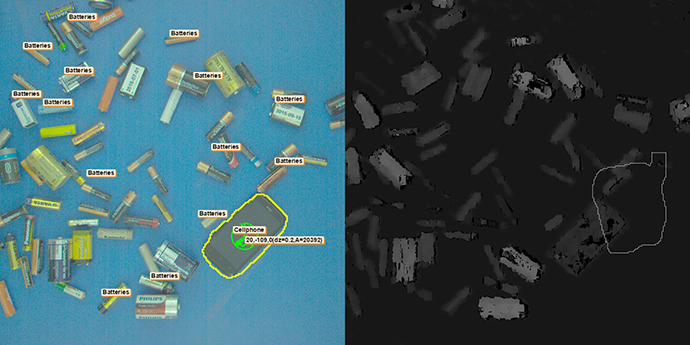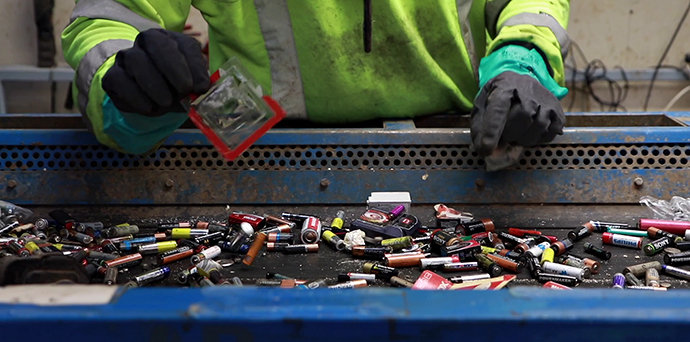Robot system extracts dangerous and valuable items from waste using AI
6 June 2018
A robot system not only protects the employees, but also the environment when batteries and electronic waste have to be sorted.
The possibilities for modern robot technology in the waste industry are many.
This is highlighted by the Danish Technological Institute (DTI), which in collaboration with Refind Technologies from Sweden has developed a robot sorting system that, using artificial intelligence, can recognise and sort batteries and electronic waste.
The technology will also be able to provide an improved working environment for employees in the waste industry.
‒ The potential for robotics in the waste industry is huge because robots can efficiently sort large volumes of waste and extract resources that we need, says Jacob Kortbek, Vice Director from DTI.
‒ Our solution is based on several different methods - both visual methods for recognising batteries and electronics waste, but also picking methods that enable the robot to collect these items and place them into the correct categories, he adds.

With the robot system - using advanced camera technologies and deep learning to recognize the different objects - it is possible to collect items containing significant value, for example, precious microchips or gold from mobile phones. When the system is able to distinguish between, for example, telephones and remote controls, the more expensive batteries from the phone are not thrown out with the less expensive batteries from the remote control.
This allows the robot system to create better resource utilization for society.
Needles among batteries
People throw anything out and you never know what dangerous and sharp objects are present when waste is to be sorted. The staff at Stena Recycling, which sorts hazardous waste such as batteries, know all about this. Stena Recycling is a partner in the project and contributing their extensive domain knowledge. The company is convinced that robotics can help improve safety and quality at their sites.
‒ This system will improve the working environment and well-being of our employees because many of the routine tasks will be replaced by robotics, so we can use our staff's competences for the more specialized tasks, says Gerd Engelbrecht, branch and production manager at Stena Recycling.

‒ The system - which is currently set up in the Danish Technological Institute's robot innovation facilities in Odense - is unique, as we have not worked with these things in the same way before, says Rasmus Johansson, Machine Learning Engineer at Refind Technologies.
‒ I think it's hugely exciting that we are doing things that no-one else has done before. We combine the latest research with live product classification and robotics in industry. It is completely unique, he emphasizes.